Just over two years after officially announcing its launch, Riyadh Air returned to the 2025 Paris Air Show, intent on showcasing the tangible progress made on its ambitious project. We sat down with Ian Bradley, Riyadh Air's Vice President of Global Communications, to assess the current status and evolving objectives of this emerging Saudi carrier. Although the airline has yet to complete its maiden flight, it continues to draw considerable attention from the global aviation industry. This interview follows our initial meeting with Riyadh Air's team during the 2023 edition of the show, offering an opportunity to gain deeper insight into its development strategy and the passenger experience it intends to deliver.
When Riyadh Air was introduced in 2023, it announced plans to commence operations in 2025. Two years later, according to Ian Bradley, the airline still aims to operate its inaugural flights before the end of the year, in line with the original timeline. The carrier received its Air Operator Certificate (AOC) from the Saudi General Authority of Civil Aviation (GACA) in April. The arrival of the first Boeing 787-9 aircraft, expected later in 2025, is set to mark the official launch of operations.
In the meantime, Riyadh Air has reportedly been working behind the scenes on various elements of its offering: network planning, lounge design, loyalty program, and onboard products—all reportedly developed with the goal of delivering a high-quality experience from day one. Further details on these elements are expected to be shared over the summer.
Operationally, the airline's recruitment process appears to be well underway, with a growing number of cabin crew and pilots already on board. Additional hiring phases are reportedly scheduled in the coming months.
While Saudia, the historic flag carrier, remains firmly based in Jeddah after more than 80 years of operation, Riyadh Air has been established under the Vision 2030 initiative with a clear mission: to improve Riyadh's international air connectivity. The Saudi capital, despite having a population of nearly 8 million and being part of the G20, remains surprisingly underserved in terms of direct international air links. Travelers often face stopovers in Istanbul, London, Frankfurt, Doha, or Dubai to reach the city. Riyadh Air aims to reduce this reliance on foreign hubs by offering more direct services tailored to the needs of both local residents and international visitors.

This strategy also reflects the diversity of demand segments. While Jeddah and Medina remain central for religious traffic, Riyadh is seeing a growing number of pilgrims as well. “There is, of course, significant religious traffic into Saudi Arabia”, the respondent notes. “Many fly to Jeddah, but a substantial number also pass through Riyadh.” Riyadh Air intends to cater to a wide range of traveler profiles—tourists, businesspeople, pilgrims, and event attendees—by ensuring efficient connectivity for all.
While a future hub strategy does not seem to be out of the question, the current priority is to enhance Riyadh's accessibility itself rather than to turn it into a global connecting point. As a complement to Saudia's Jeddah-centric operations, Riyadh Air is expected to develop a separate, yet complementary, hub model to support tourism, business travel, and MICE (Meetings, Incentives, Conferences, and Exhibitions) segments. According to Ian Bradley, both carriers are expected to coexist and operate in a coordinated fashion, aligned with the country's broader economic ambitions.
Riyadh Air has set a target of serving 100 international destinations by 2030. Its route network will initially prioritize major global capitals, particularly in North America, Europe, and Asia, with a gradual expansion strategy. The interviewee acknowledges that achieving this goal will take time, but he remains optimistic about the possibility of connecting Riyadh to the world within five years.
In parallel, the airline is expected to develop a robust domestic network, including links to Jeddah, to feed its Riyadh hub and facilitate seamless connections between international and regional destinations across Saudi Arabia.
Riyadh Air is entering a region already home to some of the world's most prominent carriers, including Emirates and Qatar Airways. Despite the proximity to such well-established players, the newcomer does not appear to view this as a threat. “We fully understand that we live in a very competitive neighborhood with some great airlines around us, and that's great for the region”, Bradley explains. Rather than competing directly for market share, the airline seeks to create complementary value and expand the market.
The airline believes there is significant untapped potential in Riyadh. By introducing new direct routes to the Saudi capital, Riyadh Air intends to address existing demand that is currently underserved or reliant on indirect journeys. “There's a large population in the region, and there's more than enough business to go around for us not to be taking it from somebody else or from them to be taking it from us”, the respondent affirms. “We're not there to take them on and be a global hub.”
Unlike its Gulf neighbors, Riyadh Air does not aim to connect London with Sydney or Tokyo with Johannesburg. Instead, it embraces a point-to-point strategy focused on Riyadh, with a clear promise: to make the capital more accessible, without replacing existing global connecting hubs.
That said, Riyadh Air appears committed to delivering a premium onboard experience. From launch, the airline has introduced upscale cabin concepts, including an ambitious Business Class and Premium Economy. “We've got a really good product, probably one of the best in the world, across the entire aircraft”, Ian Bradley asserts. “We will be very competitive, if not one of the industry leaders, when it comes to our guest experience in the product that we have on board.”
Riyadh Air is investing in a next-generation fleet designed to deliver operational performance, network flexibility, and a high-quality passenger experience. To date, the airline has placed orders for up to 182 aircraft, including 72 Boeing 787-9 Dreamliners, 60 Airbus A321neos, and 25 Airbus A350-1000s on firm order (with 25 additional options).
The airline's order of 72 Boeing 787-9s signals a preference for long-range efficiency and state-of-the-art technology. However, the aircraft's interior is where Riyadh Air sets itself apart.
The premium experience centers around two products: Business and Business Elite. Both feature a 1-2-1 configuration with Safran Unity seats that convert into fully flat beds nearly 2 meters long. Passengers will benefit from high walls, sliding doors for privacy, premium materials, and ergonomic comfort. Business Elite will feature the Safran Unity Elite seat, allowing the two center seats in the first row to convert into a double bed.
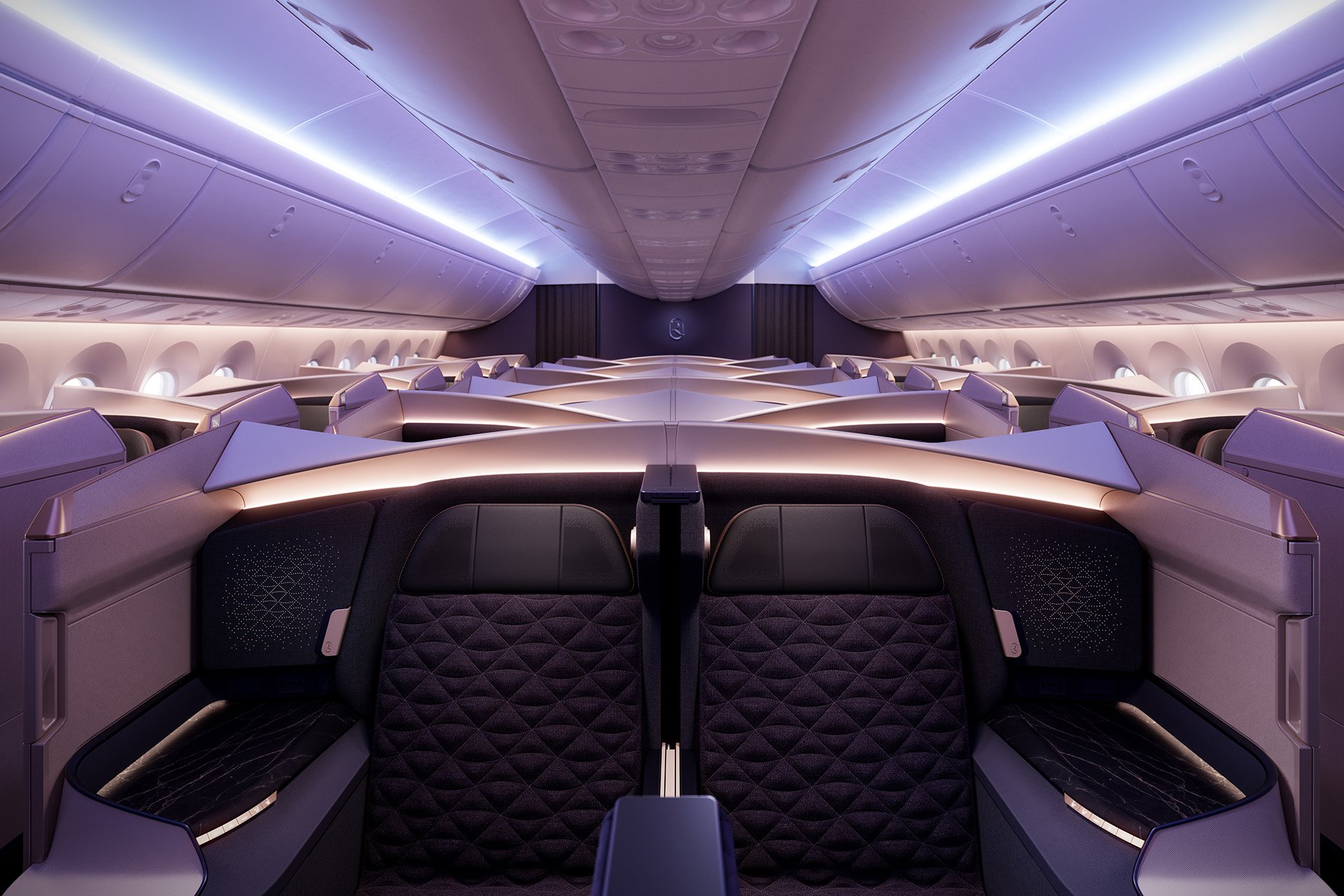
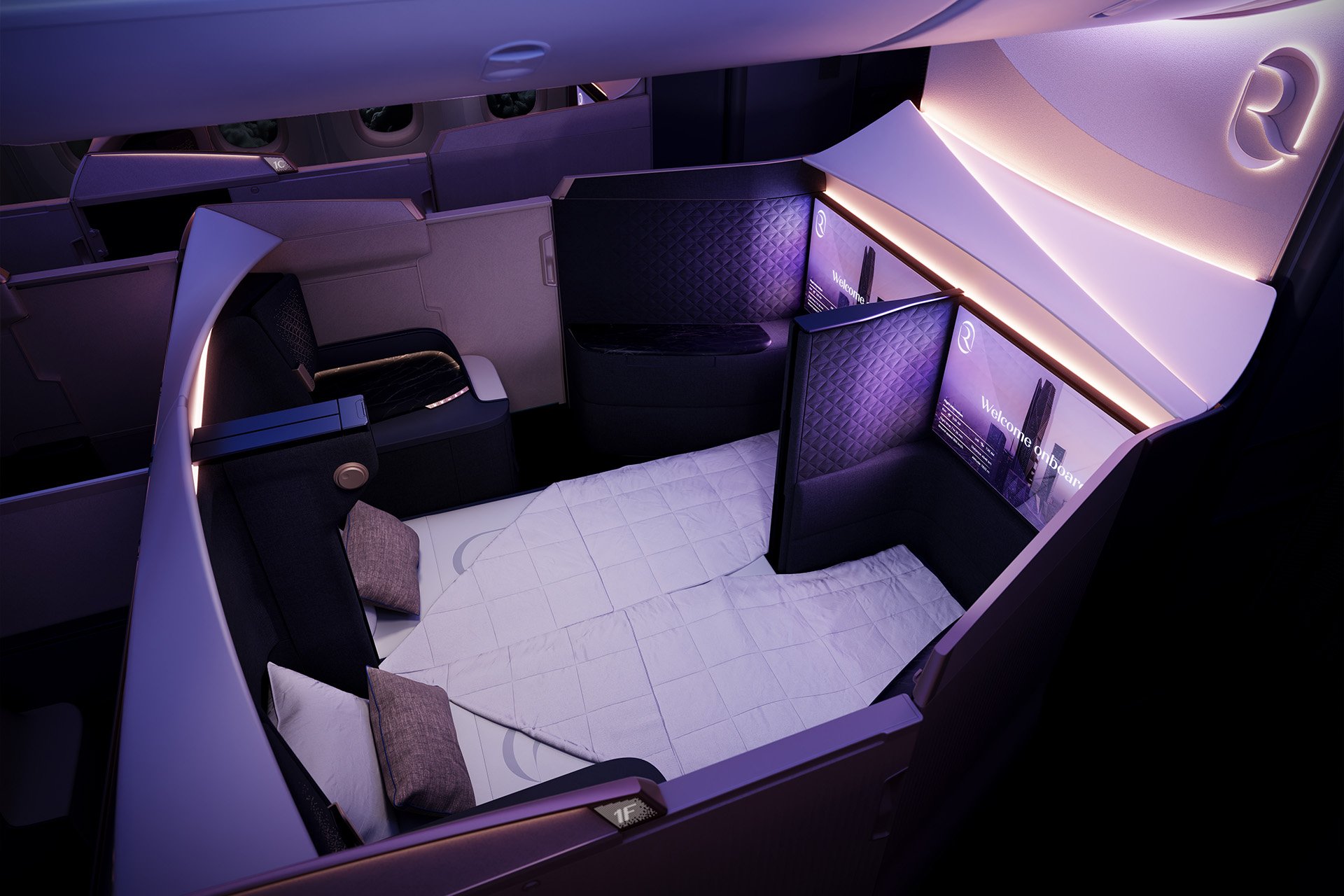
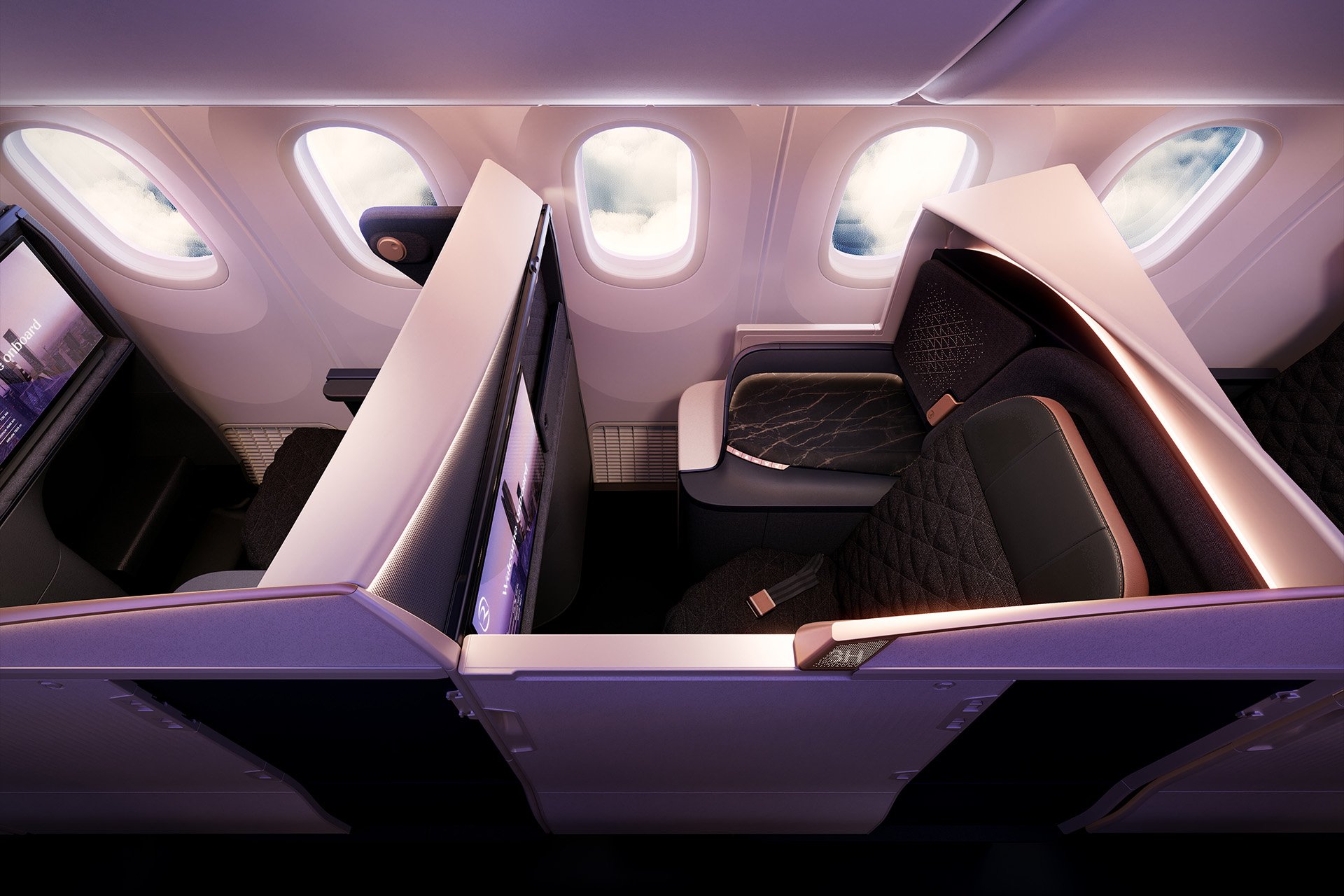
The aircraft will also offer Premium Economy seating with 39 Recaro PL3530 seats in a 2-3-2 layout, complete with leg rests, wraparound headrests, oversized side tables, four USB-C ports per seat, and 15.6-inch 4K touchscreen displays.


Last year, Riyadh Air ordered 60 Airbus A321neos, evenly split between standard and long-range (A321LR) variants, enabling exceptional flexibility across regional and medium-haul markets in Europe and Asia.

All A321neos will feature an Economy cabin consistent with the broader fleet to ensure a uniform passenger experience. The standard version will offer a regionally competitive Business Class, while the LR variant will feature an enhanced Business product—approaching full-flat seats—for greater comfort on longer flights. No Premium Economy Class will be offered on these narrowbodies, with Riyadh Air opting for a two-class configuration.
The first A321neos are expected to be delivered in the second half of 2026.
During the 2025 Paris Air Show, Riyadh Air signed a firm order for 25 Airbus A350-1000 aircraft, with options for 25 more. The A350's extended range is expected to open new ultra-long-haul routes to Asia-Pacific, North America, and Australia, as well as direct flights to emerging economic hubs.
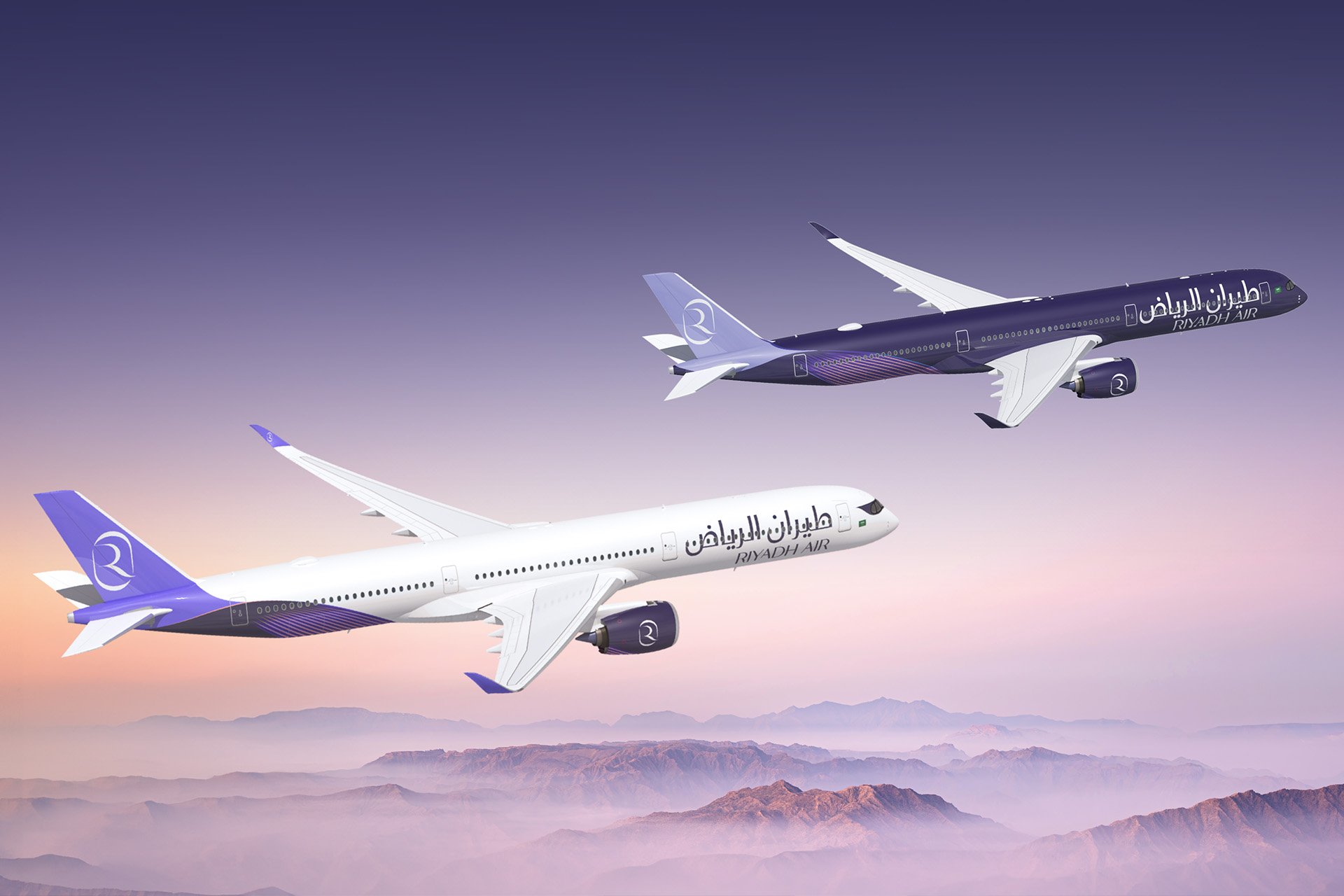
The most notable addition on the A350 will be a dedicated First Class cabin—absent from the 787, where Business Elite provides enhanced comfort without the First Class label. Business Elite will not be offered on the A350, according to Bradley.
The First Class product is currently in the design phase, with a focus on a distinctively Saudi aesthetic—colors, lighting, textures, and materials curated to create an immersive, sensory experience. The first A350-1000s are not expected to enter service before the end of the decade.
Riyadh Air places strong emphasis on brand identity, both within its cabins and across its aircraft exteriors. Interior design elements include signature motifs such as the “Canopy Twist”, integrated into seat stitching and cabin textiles. The color palette—featuring purple, lavender, indigo, peach, and mocha gold—is designed to evoke a premium ambiance inspired by Saudi landscapes and culture.
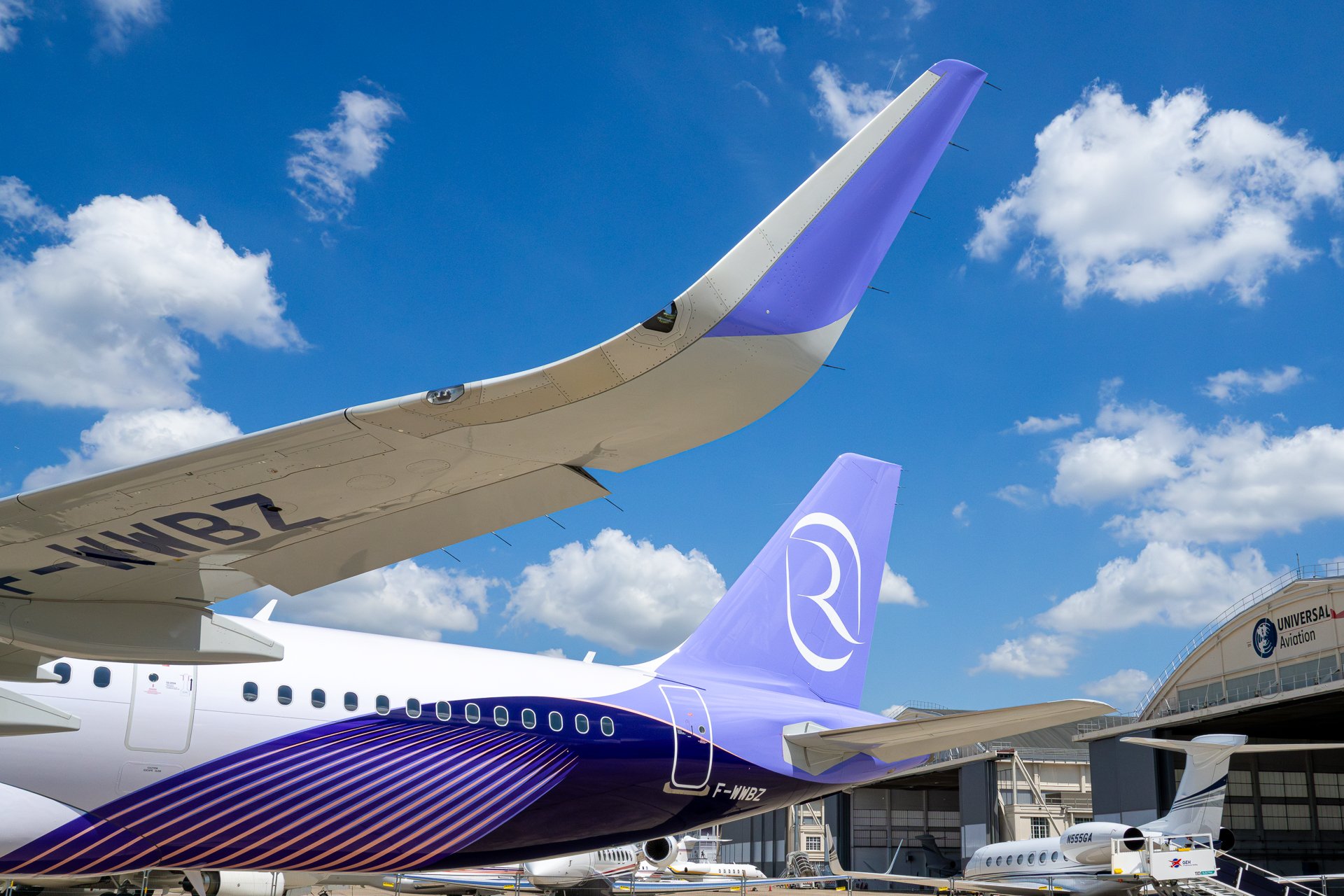
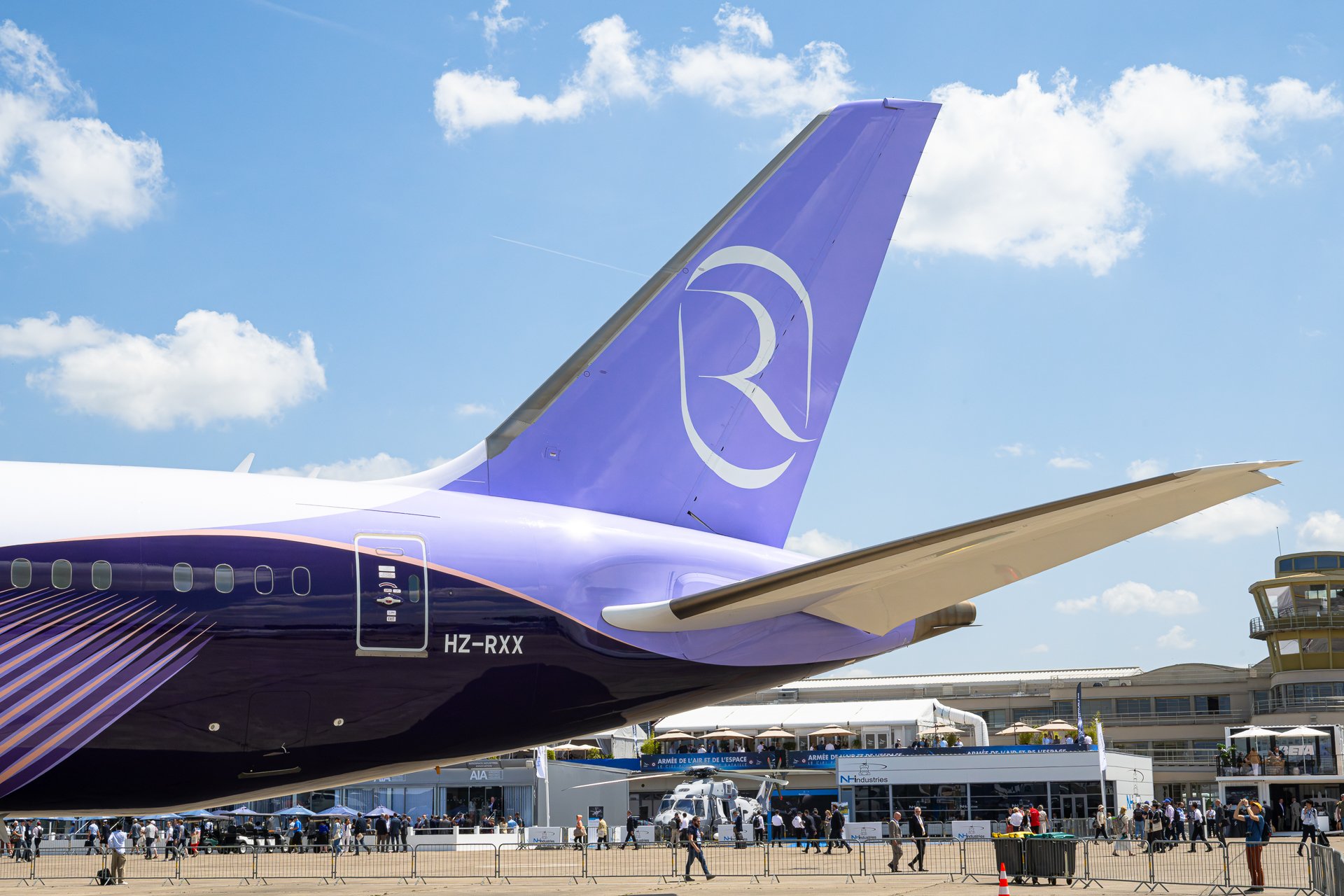
The airline also aims to reflect traditional Saudi hospitality through a warm atmosphere and a service philosophy centered around welcoming passengers. This cultural dimension is seen as a key differentiator in the airline's approach to customer experience.
On the livery front, Riyadh Air introduced a bold all-purple paint scheme in 2023. A more understated livery was exposed this year at the Paris Air Show on both an A321 and a 787, aligning with the fleet's upcoming entry into service. According to Ian Bradley, the iconic purple livery will remain in use on approximately one out of every ten aircraft, meaning a dozen planes are expected to feature it in the long run.
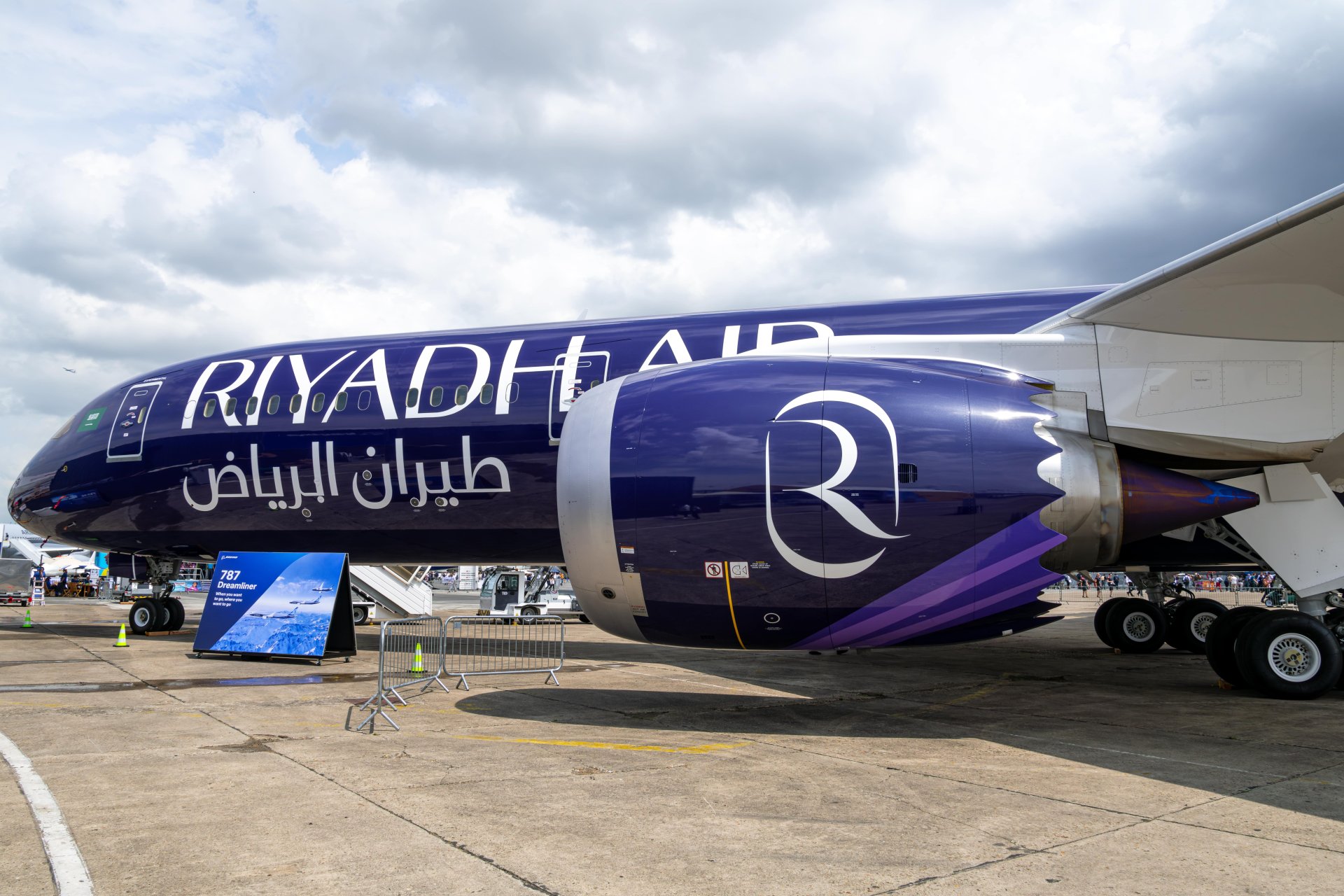
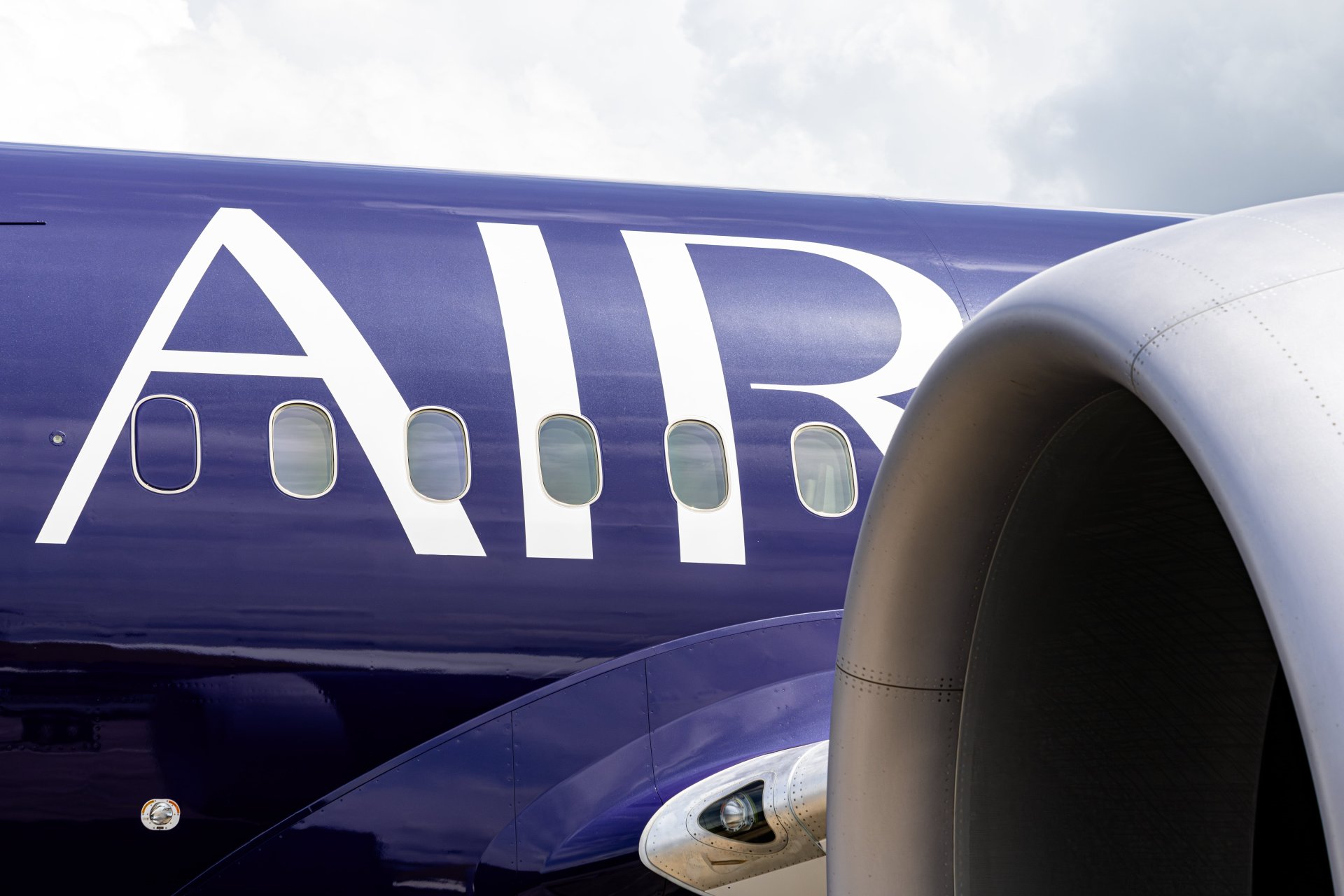
With a forward-looking strategy, Riyadh Air is steadily moving toward its first commercial flight, anticipated by the end of the year. Beyond its polished image and premium positioning, the airline carries a broader ambition: to enhance Riyadh's global accessibility and support the Kingdom's Vision 2030 transformation agenda.
Rather than replicating the models of its powerful regional peers, Riyadh Air appears committed to charting its own path—focusing on direct connectivity, onboard comfort, and a strong cultural identity. While challenges remain—including network development, recruitment, and aircraft deliveries—the airline seems to have laid solid foundations and articulated a clear vision.
The key now lies in turning this ambitious vision into operational reality—an endeavor that may ultimately define the long-term success of this promising new carrier.
Featured image by Yann Arnould / Flightreviews.net